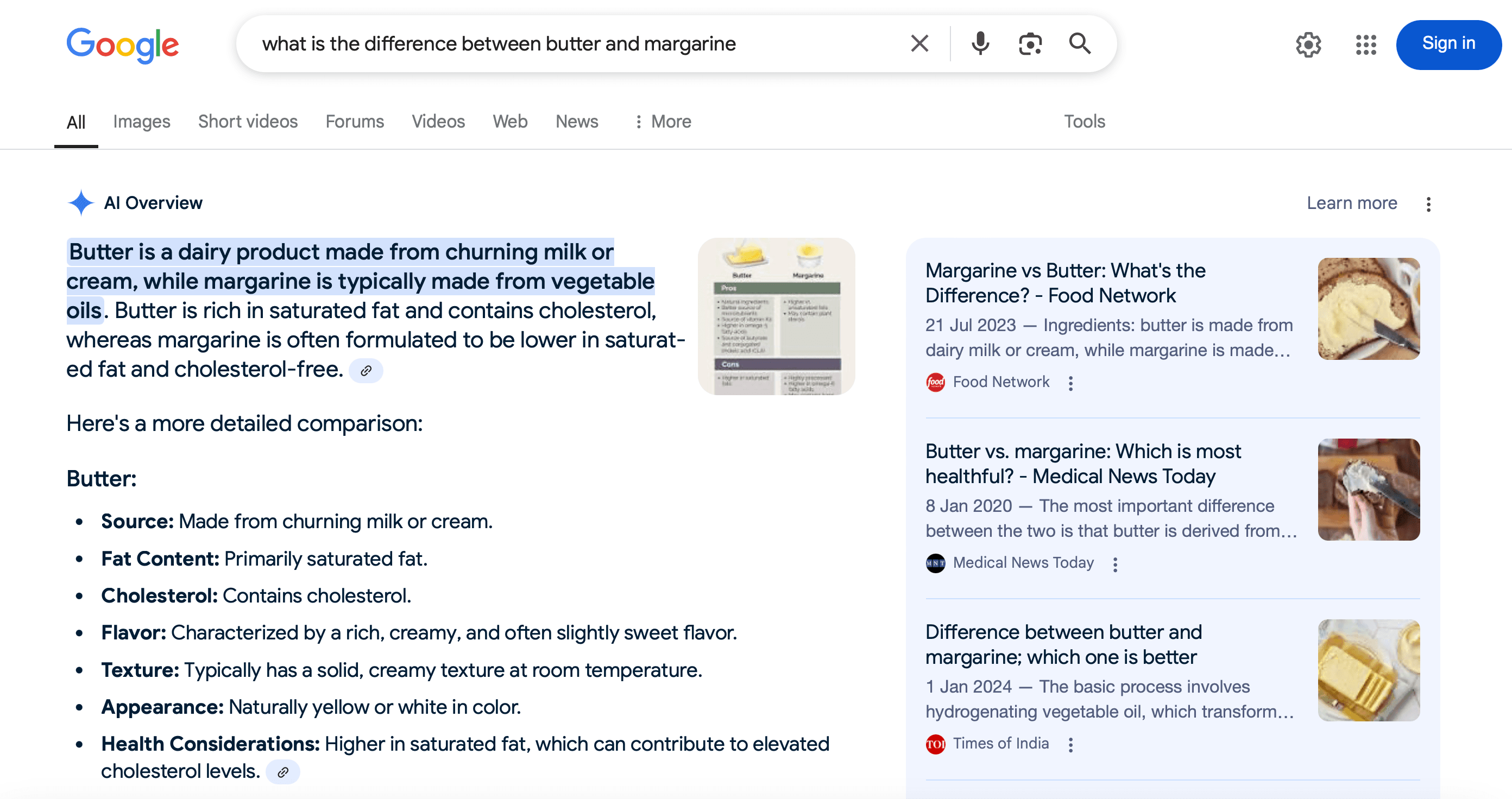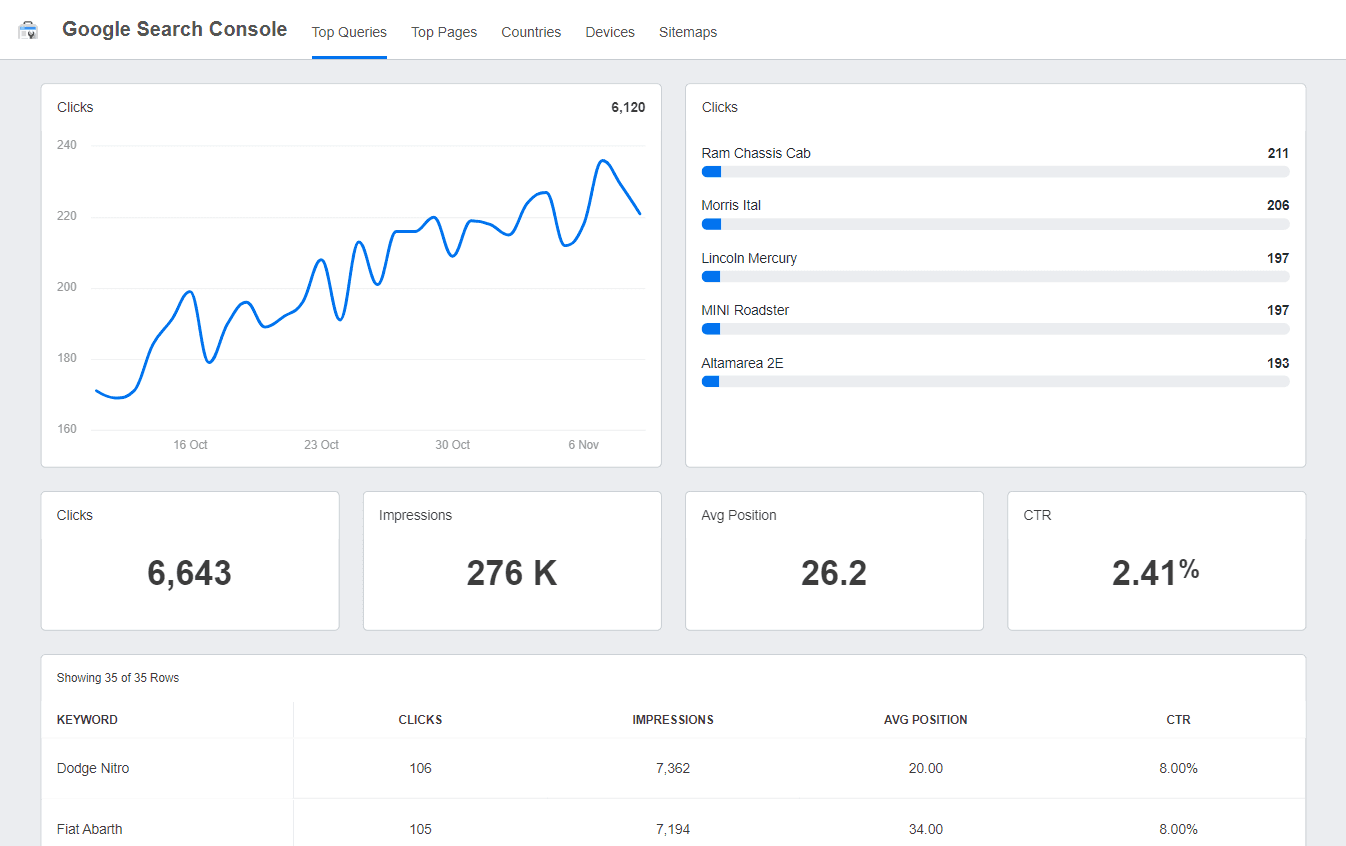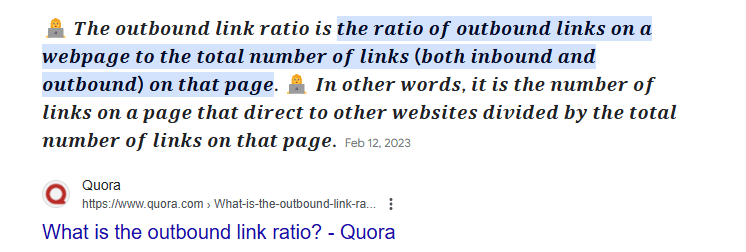Table of Contents
QUICK SUMMARY:
Answer Engine Optimization (AEO) is the practice of structuring content so it’s easily understood and surfaced by AI-driven search features like voice assistants, AI summaries, and featured snippets. Moving forward, it’s especially important since many users now want instant answers, not long click paths. This article breaks down what AEO is, how it differs from traditional SEO, and the top strategies to achieve search visibility. Additionally, we share expert insight from the Senior SEO Strategist at AgencyAnalytics for a more comprehensive picture.
Just when things start to settle, the search landscape shifts… again.
Instead of clicking through to websites, users now expect precise answers, right there on the search results page. It’s fast, convenient, and completely changing the online experience as we know it.
The impact is hard to miss: lower search visibility, fewer clicks, and tighter competition for limited SERP space. Chances are, it’s already led to concerned Slack messages, lengthy internal discussions, or even client questions.
While a lot is still in motion, one thing is getting clearer: The importance of Answer Engine Optimization (AEO). Unlike traditional search engines, AEO focuses on structuring content so it gets picked up, trusted, and featured in AI-generated responses–even if users never land on your client’s site.
Wondering what this new and shiny development is all about? This article explores everything you need to know about AEO, including the top digital strategies to implement, and potential future trends. We’ll also share insights from our Senior SEO Strategist to put everything in perspective.
AEO vs. Traditional SEO: What's the Difference?
Simply put, SEO is designed to drive traffic. In other words, it’s all about search rankings. Plug in the right keywords, build some backlinks, and aim for a top spot on traditional search engine results pages. From there, the goal is to earn a click—send your client’s target audience to a blog post, a product page, or maybe a demo. Straightforward enough.
On the other hand, AEO is built for visibility but not necessarily clicks. It focuses on brand visibility within the answer itself. AEO prioritizes direct, structured, and relevant responses that AI-powered engines will surface instantly. Plus, it doesn’t require the user to visit a website or sift through long-form content.

More specifically, here are a few major differences to remember:
AEO Delivers the Answer Upfront: While traditional SEO focuses on rankings and earning a click, AEO uses machine learning technology to surface answers directly on the results page.
AEO Doesn’t Prioritize the Click: Instead of driving traffic to a full page, AEO pulls the most useful content into AI-generated summaries, previews, and voice responses. In other words, it meets the user exactly where they are.
AEO Optimizes for Precision: It targets bite-sized, structured responses that AI can easily extract (like definitions and how-to instructions). Conversely, traditional SEO emphasizes optimizing entire pages for engagement.
AEO Targets AI Engines: It’s designed for large language models and AI answer engines that process content semantically. On the other hand, SEO leans heavily on signals for crawling and indexing.
AEO Focuses on Clarity and Speed. While SEO takes time to build authority through link-building and deep content, AEO prioritizes fast, clear answers. That means there’s the possibility of newer content gaining traction quicker.
Search engine optimization has long been about staying on top of Google’s algorithm changes and on-page optimization trends. But this new environment now demands monitoring trends and adapting to zero-click search environments. It’s the opposite of what's been done since the 90s.
Carson Crane, Senior SEO Strategist, AgencyAnalytics
To sum it up, AEO is about being the answer, right in the search result, summary card, or voice reply. SEO, on the other hand, still depends on earning that click and guiding users through a full-page experience.
Why AEO Matters More Than Ever in 2025
Traditional SEO still has its place, but it’s no longer the only sheriff in town.
Users expect instant answers. Nowadays, they’re scanning AI summaries, not scrolling through ten blue links. And from the looks of it, answer-driven search responses will be around for the long haul.
This is the first time Google’s dominance has been challenged to the point where they’ve actually lost market share. From here on out, it’s not just about ranking on Google search results. It now means using traditional SEO as the foundation, while prioritizing AEO to stay visible across multiple AI-driven and generative search platforms.
Carson Crane, Senior SEO Strategist, AgencyAnalytics
For more context, here’s an overview of why AEO is increasingly important this year (and beyond).
Reason | Description |
|---|---|
AI-Powered Search Is Now the Default | AI tools like Google’s Search Generative Experience (SGE), Bing Copilot, and ChatGPT are no longer in test mode–they’re now a key part of how people search. These engines prioritize fast, credible answers over traditional web listings. |
SERP Real Estate Is Shrinking | Rich snippets, AI summaries, and answer cards dominate the top of the page. That pushes organic listings below the fold, even for high-ranking or relevant web pages. Therefore, visibility now depends on whether that content gets pulled into SERP features. |
Click-Through Rates Are Dropping | As more users get what they need from AI responses and zero-click results, traditional SEO strategies are delivering less traffic. AEO helps content stay competitive by targeting answer-based search visibility. |
Voice and Multimodal Search Are Rising | Voice recognition technology is gaining traction, which means that users often expect natural, conversational answers. AEO preps content to be understood and surfaced in these formats. |
Clients Are Asking the Right Questions | Agencies are getting tougher questions from clients like “Why is traffic down even though we're ranking?” and “How do we show up in AI answers?” Therefore, AEO is a modern content strategy to address those questions with confidence and results. |
The sooner AEO is implemented, the easier it will be to keep clients visible in this developing space where clicks are no longer guaranteed.
The Function of Answer Engines
Answer engines are designed to interpret, synthesize, and deliver information in real time. They pull structured content from trusted sources and generate responses that feel conversational, context-aware, and immediate.
Whether it’s a snippet at the top of Google, a summary from Microsoft Bing Copilot, or a voice reply from Alexa, the goal is the same: Eliminate friction and deliver results faster.
To do this, answer engines rely on three core signals:
Content that’s directly extractable, not buried in long paragraphs.
Clear structure and formatting that helps machines understand what’s being said.
Authority and trustworthiness, which signal that the content is reliable enough to surface.
This means that content should be built with clarity, structure, and authority. If the engine can’t parse it, it won’t present it.

Even if search evolves, your reporting approach should remain the same. Monitor key metrics, user search behavior, and much more–explore AgencyAnalytics, free for 14 days.
Main Types of Answer Engines
While there are various types of answer engines, they’re all designed to reduce the steps between an inquiry and a relevant response.
Here are the main ones to know about.
Answer Engine Type | How It Works | Examples |
|---|---|---|
AI-Driven Search Engines
| Pulls concise answers directly into the search interface, often above organic results. Uses structured data, featured snippets, and AI summaries. | Google SGE, Bing Copilot |
AI Chat Assistants | Responds to user queries using natural language models, pulling from a mix of live web data, knowledge bases, and indexed content. Often used for research, summaries, and comparisons. | ChatGPT, Claude, Perplexity |
Voice Assistants | Delivers spoken answers using pre-parsed content, short summaries, or integrations with search and custom skills. For best results, content should be brief, structured, and easy to vocalize. | Alexa, Google Assistant, Siri |
On-Site Answer Engines | Internal search systems or AI-powered bots that help users find specific answers within a website or platform—no external search needed. | Intercom bots, Site search tools with AI |
Whether you’re optimizing for AI summaries or voice search assistants, create content that delivers answers in an easy-to-understand format.
Top Strategies To Implement Answer Engine Optimization
You don’t need to start from scratch to win with generative AI bots. But you do need to rethink how content is structured.
Here are five core strategies to create a solid AEO strategy and align with how users search.
Focus Keyword Research on “Answering” Queries
The more closely content mirrors natural language questions, the more likely it’ll be featured in AI-generated responses.
For best results, be sure to:
Include Question-Based Headers: Format content around questions and use intuitive formatting (e.g., H2s, H3s, or a dedicated FAQ section). This makes it easier for answer engines to understand and extract key points.
Mimic Actual User Questions: Use tools like Google’s “People Also Ask” or Reddit threads to identify real-world phrasing. After incorporating these terms into your client’s content, use a Google Search Console dashboard to monitor SERP changes.
By focusing even more on user intent, you’ll create relevant content that also satisfies the engine’s need for clear, quick answers.

Keep an eye on SERP positions, discover top-performing user queries, and even diagnose technical SEO issues. Try the GSC integration in AgencyAnalytics–it’s free for 14 days.
Clear, Concise, Authoritative Answers
Answer engines prioritize clarity. They’re scanning for content that delivers value fast—no long intros, no fluff, no unnecessary details.
That means it’s best to lead with the takeaway and not bury it. Responses should be short (ideally within 30 to 50 words for quick definitions, how-tos, or stats). If it takes too long to get to the point, answer engines will move on.
Authoritativeness matters just as much. Answers that cite credible sources, rely on accurate data, or show subject-matter expertise are more likely to be selected. Also, phrasing like “might,” “could,” or “possibly” could weaken trust. The best-performing answers are clear, specific, and confident.
Structure for Featured Snippets
Featured snippets are often the first (and sometimes only) thing users engage with on a results page.

To increase the chances of appearing in a snippet, focus on search intent and solution-focused content. For example, say a legal client wants to show up for a time-sensitive query like “what to do after a car accident.”
In this case, it’s a good idea to create relevant content around this topic that leads with a direct answer, such as, “After a car accident, check for injuries, call emergency services, document the scene, and contact a personal injury attorney.”
It’s also a good idea to use numbered lists for step-by-step guides, bullet points for quick rundowns, and tables for comparisons. That way, answer engines are more likely to extract and display the content.
Use of FAQ Schema & Rich Results
Content structure matters just as much as the content itself.
FAQ schema plays a key role here. It’s a type of structured data markup that tells search engines, “This section answers a question.” When used properly, it increases the chances of that content showing up in AI-generated answers.
Similarly, rich results are the enhanced listings that show up directly in the SERP. They often include contextual information, such as star ratings, FAQs, pricing, or step-by-step instructions. By providing as much upfront information as possible, you’ll build authority and increase the chances of showing up on AI-generated answers.
Organic content that’s well-structured has always withstood shifts in Google’s algorithms and product updates. AEO simply adapts that principle to a new reality where AI engines decide what gets seen.
Carson Crane, Senior SEO Strategist, AgencyAnalytics
Optimize for Voice Search
Voice search queries are longer, more conversational, and often hyper-local.
To win here, write the way people speak. Use natural phrasing, contractions, and direct answers. And make sure your client’s site speed and mobile optimization are on point—Google probably won’t voice-read a slow site.
More specifically, it’s a good idea to:
Use Natural, Conversational Phrasing: Think about how people say things, not just how they type. For instance, "How do I file taxes as a freelancer?" is more voice-friendly than "freelance tax filing tips."
Structure Content With Intent-Driven Headers: Format subheadings as questions that match spoken queries. This helps engines parse the content quickly.
Layer in FAQ Schema: Many voice answers are pulled directly from structured content, especially FAQ sections. Therefore, it’s a good idea to use this approach.
Voice search is all about speed, clarity, and natural language processing. When content is structured to match how people speak (not just how they search), it’s far more likely to be picked up by voice assistants.
Future Trends in AEO
While we’re getting a solid sense of how AEO works, it’s subject to evolve (like most things in marketing). To stay one step ahead, here are a few possible trends to keep on your radar.
Trend | What It Means |
|---|---|
AI-Native Search Behavior | Gen Z and younger users may skip Google entirely, turning to ChatGPT, TikTok, and Reddit instead. Agencies should optimize content for AI-native discovery, social media platforms, and community-based channels. |
Multimodal Answers | AI responses may start blending in visuals like video, images, charts, and audio. Ensure client assets are optimized, well-labeled, and easy for engines to pull into mixed-media answers. |
Real-Time Data Integration | Engines may prioritize fresh, frequently updated content over static evergreen posts. This already aligns with existing search engine optimization workflows, so it’s just a matter of ongoing maintenance. |
Credibility Scoring | Given the increasing volume of training data, AI models are getting better at providing direct answers, evaluating authority, and ensuring accurate information delivery. Content with sourcing, author bios, and strong brand signals will likely get more weight over time. |
AEO is the next phase of search, and the time to plan for it is now.
Agencies that plan ahead will gain visibility where it matters—across AI-driven platforms, in zero-click results, and inside the answers users see most.
Final Thoughts: Embracing the Shift to AI-Driven Search
As we’ve explored, search isn’t about blue links anymore. It’s about answers. Fast ones. Accurate ones. The kinds that show up in AI summaries, voice results, and chat interfaces without a single click. That’s the reality of 2025. And it’s where your agency needs to lead.
The good news? You don’t need to overhaul everything. You just need to shift your content mindset from “ranking pages” to “owning answers.” It’s about adapting to how users interact with the SERPs and providing as much upfront value as possible.
There is only ever ONE constant: The end user. When your strategy starts with a clear understanding of who the audience is, it naturally informs how content should be structured, optimized, and delivered. That’s exactly what generative engine optimization is built on—content that’s designed to be found, understood, and surfaced in AI-powered answers.
Carson Crane, Senior SEO Strategist, AgencyAnalytics
Once your agency proactively structures content for answers, you’ll help clients thrive in whatever search looks like next.

Written by
Faryal Khan is a multidisciplinary creative with 10+ years of experience in marketing and communications. Drawing on her background in statistics and psychology, she fuses storytelling with data to craft narratives that both inform and inspire.
Read more posts by Faryal KhanSee how 7,000+ marketing agencies help clients win
Free 14-day trial. No credit card required.





